Hello good people! :) I'm having a dane axe custom made and since I was not that much into axes before I would appreciate knowledgable people here explain me the difference between Petersen type L and M (with pictures please ;) )and dating of both types. As far as I know both types fall under large battle axes of late viking age/early middle ages but I'm not sure which type when exactly. Also, reading Peter Johnsson's recent post about them, I thought the thickness of the body might be tapering to 3mm before the ridge, and ridge about 7mm at the maximum. Is that alright? My smith is planning to do it from low carbon steel body and higher quality tool steel the welded on edge. I would also appreciate your comments on that. I showed him pictures from Hurstwick site http://www.hurstwic.org/history/articles/manu...ng_axe.htm and I think all dane axes shown there are type M and I would like to see some L's and know what are the main differences so that we can change the sketch while it's still time. ;)
Thanks, Luka.
I'm far from knowledgable about these two axes but I do have some information that may help. I was going to have one made too, untill some medical issues required the funds, so I have some references.
http://www.reference.com/browse/wiki/Danish_axe
http://www.unimus.no/foto/#/P=search/S=%25F8k...=312843KHM
C:\Users\Owner\Desktop\osprey dane axe\scan0003.jpg
And some pictures that Elling Polden and Peter Johnsson posted some time ago.
 Attachment: 3.27 KB
Attachment: 3.27 KB

 Attachment: 17.92 KB
Attachment: 17.92 KB
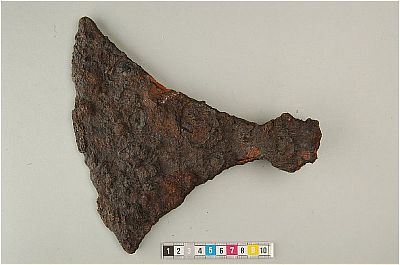
type L
 Attachment: 40.51 KB
Attachment: 40.51 KB
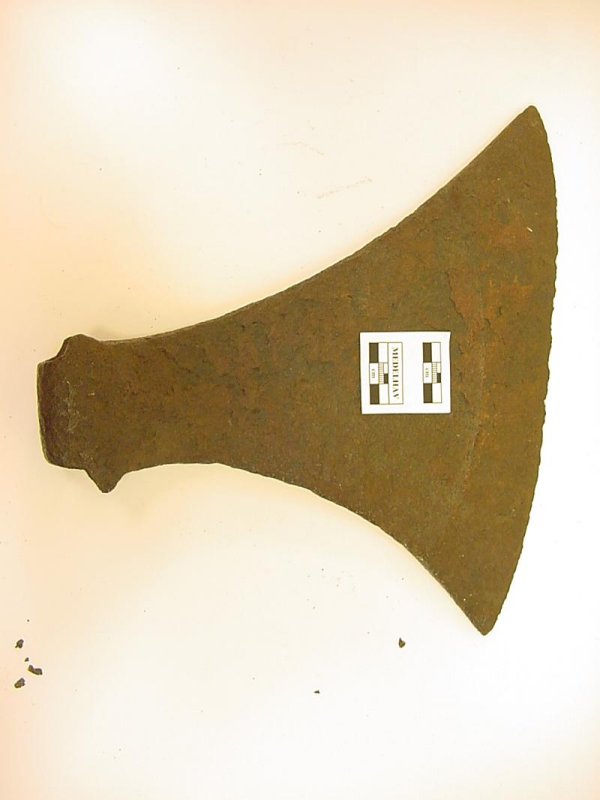
type m
 Attachment: 48.13 KB
Attachment: 48.13 KB
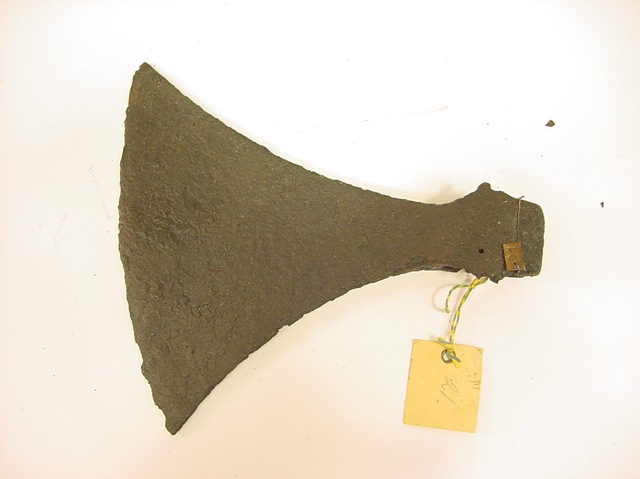
type m
 Attachment: 42.54 KB
Attachment: 42.54 KB
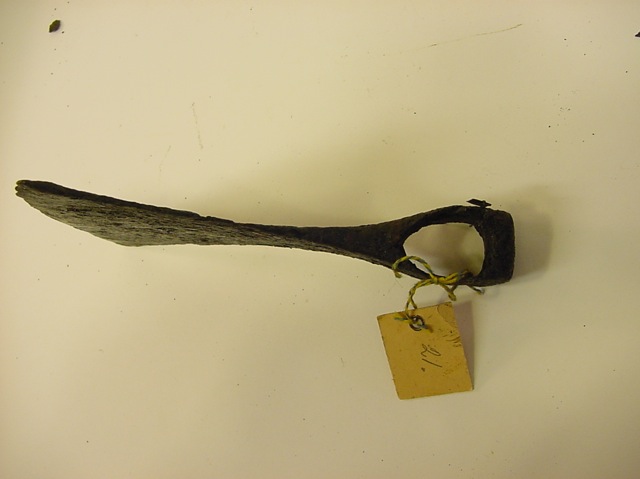
type m
http://www.reference.com/browse/wiki/Danish_axe
http://www.unimus.no/foto/#/P=search/S=%25F8k...=312843KHM
C:\Users\Owner\Desktop\osprey dane axe\scan0003.jpg
And some pictures that Elling Polden and Peter Johnsson posted some time ago.


type L

type m

type m

type m
Thanks very much! So basically L is a bit smaller overall, has a bit bigger and pointier upper horn and is of a bit earlier date? What does that mean, 10th century, 11th? I usually like my pieces to be appropriate for as early date as possible in my chosen period so I might go with a type L. But I also want it to have about 9" long edge, who knows if that goes together?
yes, those are mid tenth and eleventh century.
I'm not 100% sure what types are the eariest mounted on 2 handed poles, but maybe have a look at type E? on the hurstwic page, second from top on right side. that type has been found in sice xl.
I'm not 100% sure what types are the eariest mounted on 2 handed poles, but maybe have a look at type E? on the hurstwic page, second from top on right side. that type has been found in sice xl.
That one looks like a semi bearded type, is that so?
yes, you are right. Type C is a pure bearded axe, and type G has no trace of the beard left. Type E is right in the middle. It occupies the last half of the nineth century, possibly a little into the tenth. Now, if you want eighth century, you will have to find a bearded axe. I have no source of a bearded dane axe with me right now, as I said, I'm not quite sure how this development took place.
Ok, I'll probably go with type L. I went through Petersen axe typology translated by Elling Polden (thanks Audun and Ron!) and I think it suits my needs best. I'm still looking for comments about size, thickness and similar stuff! :)
Does anybody knows a good site with axe pictures? I would like to see as many pictures as possible to choose the one I like the most and then take that one to my smith.
here is a link to the norwegian university museum photo page. unfortunately elling hasn't translated this yet, I'll tell him to get started :P
http://www.unimus.no/foto/#/P=search/S=%25F8k...I=56419KHM
I just searched for axe (øks), so there are 1000 axes from stoneage til now, a little ekstra work for you:)
on the right side of the pictures there are some yellow and white writing.
the yellow word "gjenstand" means object. the word "tid" means time/period and the word "sted" means place of find.
"folkevandringstid" = migration era, "vikingtid" = viking age "middelalder" =middle ages
I hope someone has similar pages for sweden denmark germany and other countries as well, I have seen these pages but havent bookmarked them...
http://www.unimus.no/foto/#/P=search/S=%25F8k...I=56419KHM
I just searched for axe (øks), so there are 1000 axes from stoneage til now, a little ekstra work for you:)
on the right side of the pictures there are some yellow and white writing.
the yellow word "gjenstand" means object. the word "tid" means time/period and the word "sted" means place of find.
"folkevandringstid" = migration era, "vikingtid" = viking age "middelalder" =middle ages
I hope someone has similar pages for sweden denmark germany and other countries as well, I have seen these pages but havent bookmarked them...
This first link is to a Byzantine Ivory depicting a warrior with a Danish style axe, and the hilt on his sword appears to depict a Peterson type X, U, V, or perhaps an R which are currently dated to the last half of the 9th through the first half of the 10th century. So based on that, I would assume the depicted axe head to be of a type L.
http://members.ozemail.com.au/~chrisandpeter/ivory/ivory.html
And this link is fron a forumite on a different forum from the Oslo Museum of Cultural History
http://www.swordforum.com/forums/showthread.php?t=98963
http://members.ozemail.com.au/~chrisandpeter/ivory/ivory.html
And this link is fron a forumite on a different forum from the Oslo Museum of Cultural History
http://www.swordforum.com/forums/showthread.php?t=98963
Thanks guys! Quite a lot axes on those museum sites. ;)
Btw, totally off topic, but is this double fullered viking age sword??? It does look like it has 2 fullers...
http://www.unimus.no/foto/#/P=search/S=%25F8k...I=37974KHM
Btw, totally off topic, but is this double fullered viking age sword??? It does look like it has 2 fullers...
http://www.unimus.no/foto/#/P=search/S=%25F8k...I=37974KHM
no, the light is fooling you. it is a really bad photo tho, they haven't been picky when they chose pictures...
| Audun Refsahl wrote: |
| no, the light is fooling you. it is a really bad photo tho, they haven't been picky when they chose pictures... |
Ah, shame, it would be very cool if it was double fullered.
Back to topic, I gathered a few pictures of what I think are type L axes, if you see any of these are NOT type L, please say so! And I really don't know where I took which picture from, mostly from this forum, so sorry if I use pictures of any of you without mentioning you.
The upper middle one here:

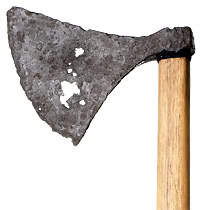

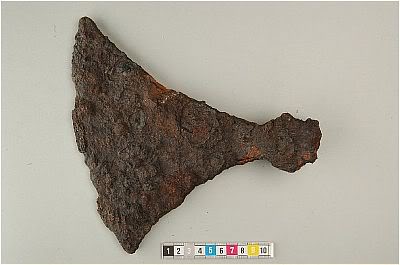
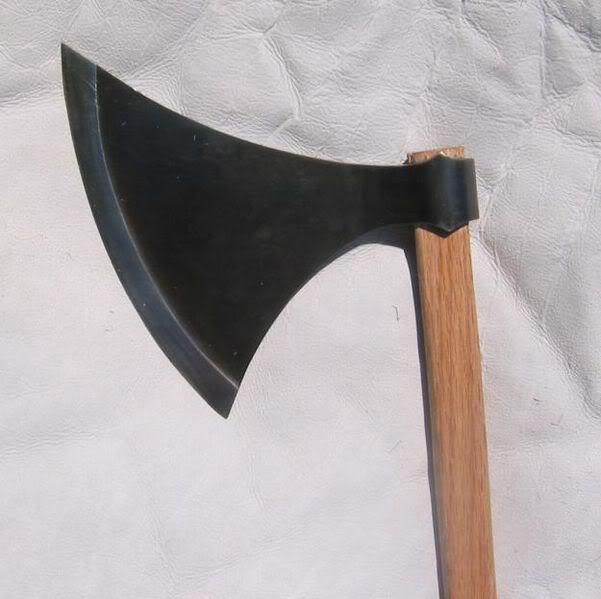
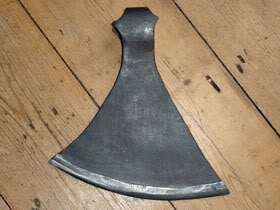
I'm forging a large Dane axe with a 13'' blade and oak handle. the body will be mild steel and the edge will be w1.
Your selection certainly fits within Petersen's typology for type L as I understand it... I love these axes.
Actually, the ones you have selected looks more like type M to me; the L type is more "boat shaped", with a longer blade compared to the edge, and a modest upper slope, while the type M is the archetypical "Broad axe" with a distinct upward slope...
 Attachment: 56.65 KB
Attachment: 56.65 KB
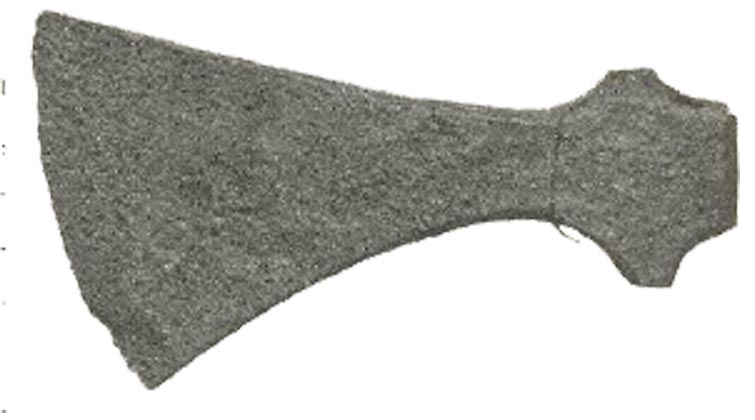
Type L
 Attachment: 102.29 KB
Attachment: 102.29 KB
Type M [ Download ]

Type L
Type M [ Download ]
Are there not axes like the second one posted by RD Moore, the badly rusted one, which can also be dated to the 12th century as well?
Yes, both the type M and L remainedi in use in scandinavia all the way into the 13-14th century.
Hm, then it seems I got it a bit wrong, thanks Elling! I'm still going with what I posted, no matter if it's type M, I just love that shape, the more pointed upper horn really opens some nice thrusting possibilities... ;)
I like the blade shape of this one from A & A , the slope should give a cleaving and slicing cut and the top " horn " agressive enough to be used as a point to a degree.
The scale of this one is more modest: Not small but not huge, but a larger version could be made:
http://www.arms-n-armor.com/custom944.html
The scale of this one is more modest: Not small but not huge, but a larger version could be made:
http://www.arms-n-armor.com/custom944.html
Page 1 of 4
You cannot post new topics in this forumYou cannot reply to topics in this forum
You cannot edit your posts in this forum
You cannot delete your posts in this forum
You cannot vote in polls in this forum
You cannot attach files in this forum
You can download files in this forum
All contents © Copyright 2003-2006 myArmoury.com — All rights reserved
Discussion forums powered by phpBB © The phpBB Group
Switch to the Full-featured Version of the forum
Discussion forums powered by phpBB © The phpBB Group
Switch to the Full-featured Version of the forum